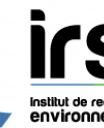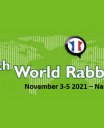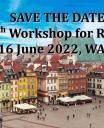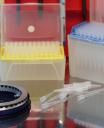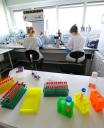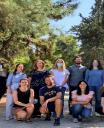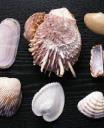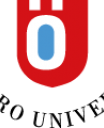12th World Rabbit Congress
From the third to the fifth of November 2021, took place the 12th World Rabbit Congress in Nantes (France). This congress consisted of three days of conferences, poster sessions, oral sessions, and round tables on a lot of topics including Ethology and Welfare:
de Greef K.H., Rommers J.M. - The Dutch route to improve commercial rabbit welfare – rather collectively than by law enforcement.
Dutra D., Villegas-Cayllahua E., Ferrari F., Costa M., Rein A., Silva A., Moraes P., Borba H. - Cage floor enrichment contributes to physical and thermal comfort of fattening rabbits.
Fetiveau M., Savietto D., Warin L., Pujol S., Gidenne T., Huang Y., Fortun-Lamothe L. - Outdoor access for growing rabbits: effect of stocking rate on behaviour and performance.
Fortun-Lamothe L., Breda J., Savietto D., Aymard P., Combes S., Gidenne T., Warin L., Huang Y. - Space use and exploratory behaviour in growing rabbit housed in large partitioned pens.
Gerencsér Zs., Farkas T.P., Nagy I., Odermatt M., Radnai I., Kasza R , Matics Zs., Szendrő Zs. - Location preference of rabbit does in a pen system combining group and individual housing.
Guené-Grand E., Davoust C., Launay C. - A new alternative outdoor housing method (Wellap®) for fattening rabbits: first results.
Guené-Grand E., Davoust C., Launay C. - A new alternative outdoor housing method (Wellap®) for fattening rabbits: behavior and space use.
Huang Y., Breda J., Savietto D., Debrusse A., Combes S., Gidenne T., Warin L., Fortun-Lamothe L. - Part-time grouping of rabbit does in enriched housing: effects on spatial position, performance and lesions.
Huang Y., Breda J., Savietto D., Labatut D., Pujol S., Combes S., Gidenne T., Warin L., Fortun-Lamothe L. - Effect of housing and enrichment on behaviour and performance of growing and reproducing rabbits.
Laclef E., Savietto D., Warin L., Huang Y., Bonnemère J.M., Combes S., Gidenne T., Fortun-Lamothe L. - Part-time group housing of familiar rabbit does in large partitionned space: effects on performance and behaviour.
Pasqualin D., Zomeño C. Santagiuliana M., Dalla Costa A., Trocino A., Lavazza A., Dorigo F., Bonfanti L., Birolo M., Xiccato G., Menegon F., Di Martino G. - A protocol for measuring health and welfare of reproducing does and litters in rabbit farms.
Ramón-Moragues A.. Martinez-Paredes E.. Villagrá A. - Differences in milk production and lactation-related behaviours in breeding does housed in individual enriched cages and part-time systems.
Rödel H.G. - Aspects of social behavior and repoduction in the wild rabbit – implications for rabbit breeding?
Rommers J., de Greef K. - Are plastic mats effective for diminishing footpad lesions of rabbit does? – survey after 10 years in The Netherlands.
Trocino A., Zomeño C., Birolo M., Pirrone F., Xiccato G. - Effect of grouping time and group stability on behavior and aggression among rabbit does in a part-time housing system.
Van Damme L., Delezie E., Tuyttens F. A. M., Maertens L. - Advances in part-time group housing systems for does: an overview of reproductive performances.
Villegas-Cayllahua E., Dutra D., Cavalcanti E., Fidelis H., Montanhim G., Silva A., Moraes P., Borba H. - Assessment of stress during handling of commercial rabbits.
Warin L., Mika A., Souchet C., Bouvarel I. - Feasibility and repeatability of the EBENE® welfare assessment measures for rabbits.
All the proceedings are available online: http://world-rabbit-science.com/WRSA-Proceedings/Congress-2021-Nantes/Nantes-2021-01.htm


